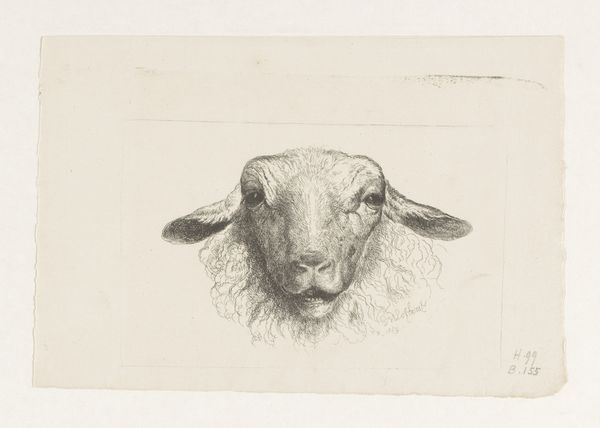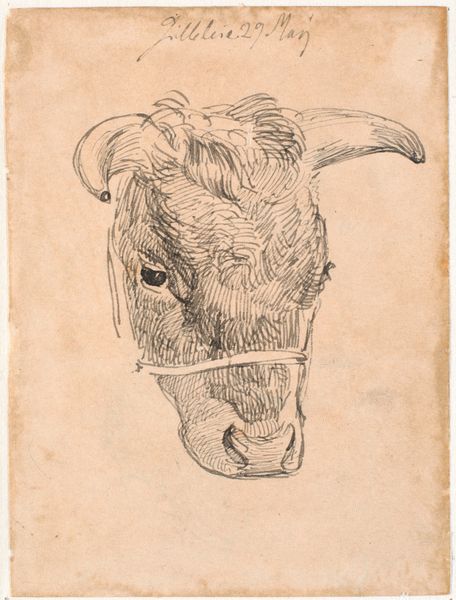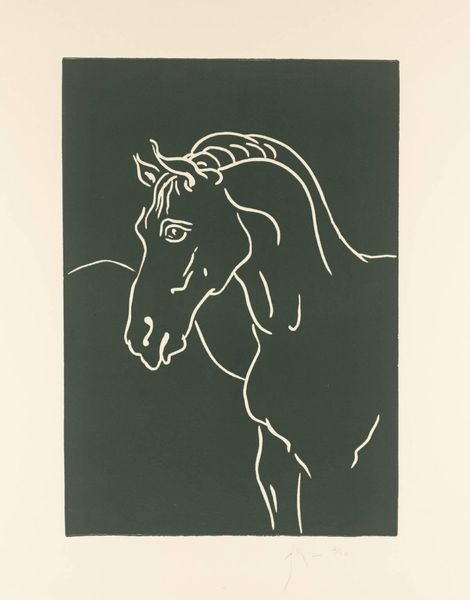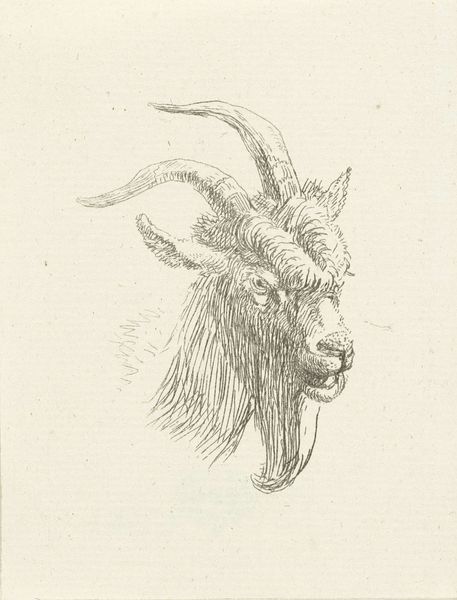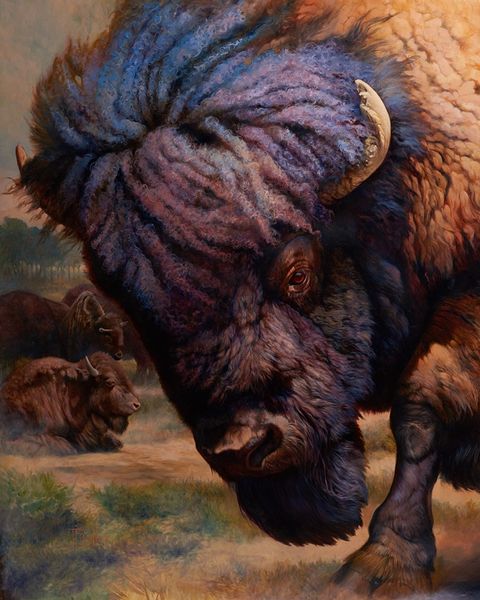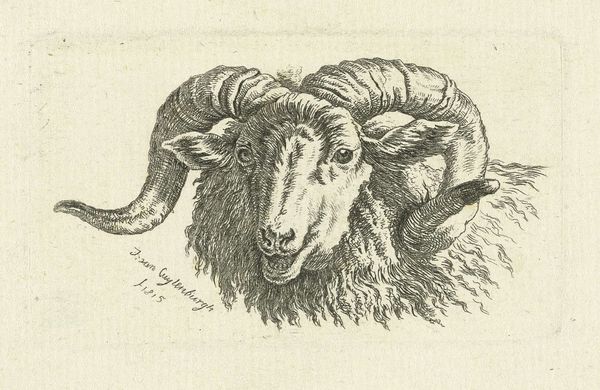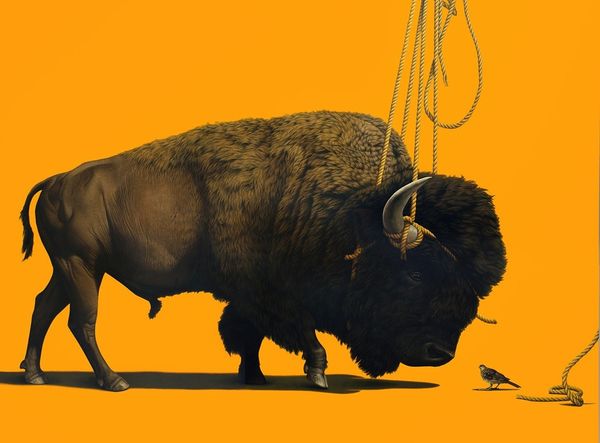
Copyright: Modern Artists: Artvee
Editor: Here we have Andy Warhol's "Bighorn Ram" from 1983, a vibrant screenprint. I find the juxtaposition of bright colors with the serious subject matter quite striking. What do you see in this piece, especially considering Warhol’s wider body of work? Curator: It’s compelling to consider Warhol's lens here. Rams have long stood as emblems of virility, power, and even stubbornness across cultures – think Aries, or the Golden Fleece. Warhol's use of industrial printing techniques and these neon colors simultaneously celebrates and maybe ironizes that traditional symbolism. Is he commenting on our culture's simplification, or even exploitation, of such potent images? What’s communicated with an image designed for mass production featuring a now threatened creature? Editor: That's interesting! It does feel like there's a tension between the seriousness of endangerment and the almost playful quality of the pop art style. Curator: Exactly. Think of how traditional portraiture imbued its subjects with dignity, authority, maybe even timelessness. Warhol seems to be asking if those modes are still valid, or if the very act of mass reproduction fundamentally changes our relationship to those cultural symbols. Editor: So, the bright colors and the screen-printing, they're not just stylistic choices, but ways of questioning how we understand these images. It sounds like Warhol uses recognizable icons in order to critique or reimagine established meanings and the continuous change to visual imagery. Thank you! Curator: Absolutely. And that reimagining invites us to constantly re-evaluate the world and cultural memory around us.
Comments
No comments
Be the first to comment and join the conversation on the ultimate creative platform.

